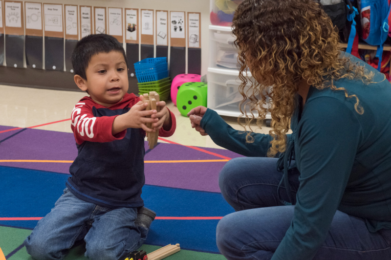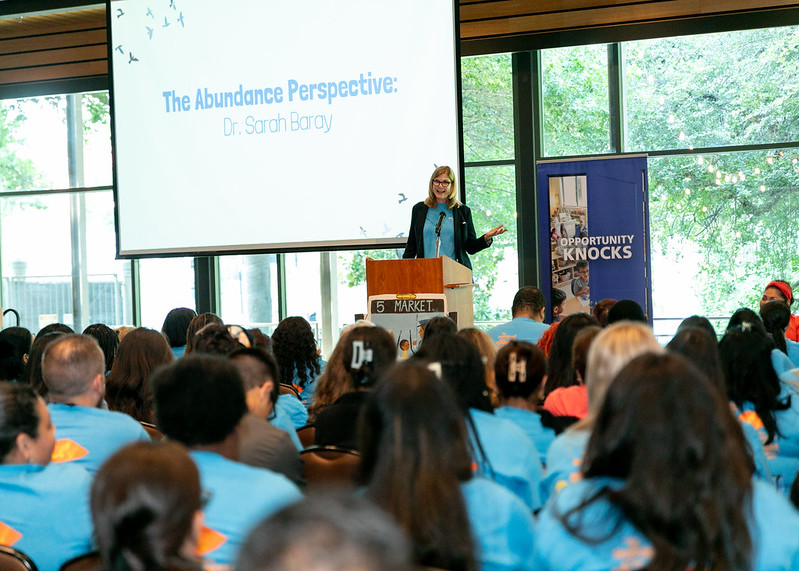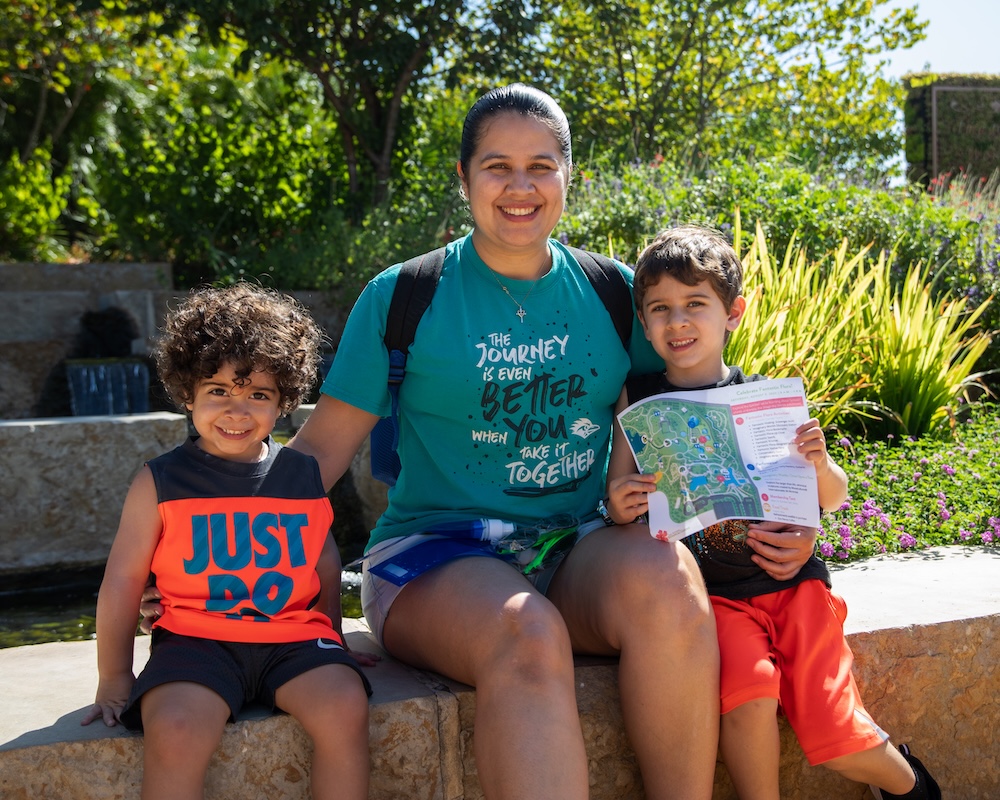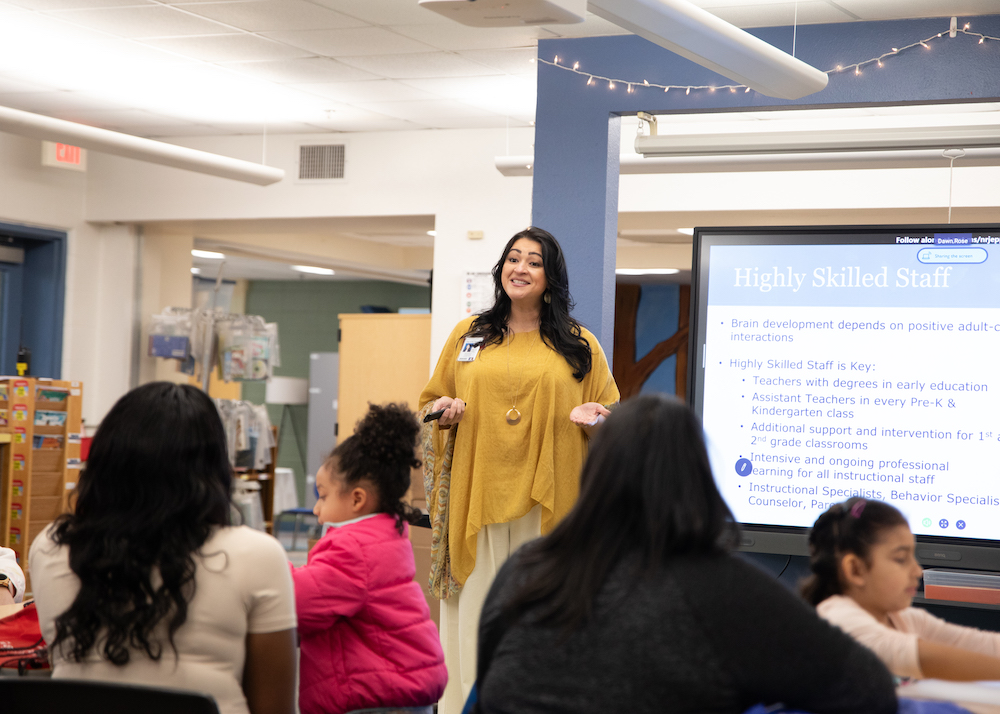By Dr. Sarah Baray, Pre-K 4 SA CEO
When I graduated from UT and landed a job at a local elementary school, I was on top of the world and determined to be the best teacher ever.
But it didn’t turn out that way. Only a month into my first school year, my enthusiasm had faded. I was drowning in special education paperwork, and many students needed more intensive support than I could give. Our principal was demanding, appeared to do nothing about unruly students, and failed to notice details—like the school ran out of laminating film in November, all the chalk was gone by February, and the copier only worked every other Thursday.
I made it through the school year but had no plans of returning when I left for the summer. I worked with a job coach to polish my resume, applied for jobs outside of education, and spent the summer interviewing for any job that wasn’t teaching. I received many offers, but none seemed quite right.
My job coach recommended I read Seven Habits of Highly Effective People by Stephen Covey—a classic now, but at the time a fairly new business book about how to develop ways of thinking and acting that lead to positive growth and help you reach desired outcomes.
Habits of highly successful educators
As I read Seven Habits, I wondered whether I was looking at the situation all wrong and reconsidered my decision to stop teaching. Three of the habits stuck with me.
Habit One: Be Proactive. Choose how to respond to situations rather than simply reacting to them. To do this, Covey says you have to think about your circle of influence.
I thought about how I might influence the conditions at my school to make things better. Could I influence the principal to recognize some of the concerns I had?
Habit Five: Seek first to understand, then to be understood. Rather than trying to make people understand you and your concerns, begin by listening to genuinely understand a person. You are more likely to be heard if you begin by listening.
This made me think about my principal—how little I knew about her and why she approached the work the way she did.
Habit Seven: Sharpen the Saw, which means take care of you. Take charge of your health, your energy, and your resources so you can be effective in the long-term.
This concept hit home because, as a first year teacher, I bought into the notion that the more hours I spent at school, the better teacher I would be.
The more I thought about what I’d learned, the more eager I was to give teaching a second chance. I decided to be proactive and ask my principal if we could meet to discuss the book. She agreed, and I brought her a copy so we could look through it together. I started our meeting by asking her about her experience as an educator and how she ended up as the principal of our school.
She told me about growing up in Alice, Texas and being the first in her family to go to college. She told me about teaching at the same elementary school she had attended while her best friend taught in the classroom across the hall. She told me about the shenanigans they got into as teachers and what led her to become a principal.
She talked about moving to a large urban district and how proud she was to be its first Latina principal. She told me the superintendent that hired her said she’d better run a tight ship because he was going out on a limb to give someone like her an opportunity to lead a school.
Our talk gave me perspective on her leadership style, but it gave her a new perspective on me as well. She no longer saw me as the troublemaking special education teacher. She saw that I really wanted to be a good teacher and for our school to be successful. She became a mentor to me and one of my biggest champions in my early years as a school leader. I am grateful for her mentorship, which was only possible because I chose abundance.
Back to school with an abundance mindset
After our conversation, I stopped job-searching and returned for the new school year with an abundance mindset. I taped this quote by Stephen Covey to my bathroom mirror so I’d see it every morning:
“The abundance mindset springs from a deep sense of worth and security. It is the paradigm that there is plenty out there and enough to spare for everybody. It results in sharing of prestige, of recognition, of profits, of decision-making. It opens possibilities, options, alternatives, and creativity.”
An abundance mindset is rooted in the belief that the world is full of opportunities and endless possibilities. It is gratitude, positivity, a generous spirit, and a profound sense of empowerment. Embracing an abundance mindset means:
● Recognizing the strengths in people and organizations
● Facing challenges by focusing on solutions and possibilities
● Embracing collaboration
● Sharing knowledge and resources
● Supporting each other in trying new ideas and achieving common goals
● Celebrating not only success, but progress and attempts that fail
● Building strong relationships that foster trust and create lasting value
Perhaps most importantly, an abundance mindset means daring to dream big and holding that dream as the north star that guides the work. By looking at my school, my classroom, and even myself as a teacher through a lens of abundance, I saw new possibilities.
Having an abundance mindset didn’t make teaching easy, nor did it make me love everything my principal did. But it gave me a new perspective on the challenges I faced. It allowed me to see my principal’s approach not as a personal character flaw, but as a different perspective on effective leadership.
The opposite of an abundance mindset is a scarcity mentality, rooted in the belief that there are not enough resources, opportunities, time, or success to go around. It breeds jealousy, anxiety, and distrust as people strategize about how to get to the front of the line because they don’t want to miss getting their share. Everyone is fighting for themselves—rather than the good of the whole—and obstacles feel inevitable and insurmountable. A scarcity mentality encourages finger pointing, negative thinking, competing over collaborating, and hoarding information and resources.
Scarcity mentality is common in schools; you can see it when you open classroom closets. There will be more boxes of glue, paper, and markers than could possibly be used in a school year. But the teacher has them stored away just in case the main supply closet runs low.
It does not have to be this way. By choosing to embrace abundance, we can transform our lives, our work, and our community in profound ways. Abundance is a way of thinking and being that fosters gratitude, positivity, resilience, and a deep sense of fulfillment.
Pre-K 4 SA: Abundant by design
In 2011, the Brain Power Task Force came together with an abundance mindset and dared to dream that every young child in San Antonio would have the opportunity to experience the powerful benefits of high-quality early learning.
There were plenty of naysayers who had a scarcity mentality. They said there is not enough voter support; that families will never send their children to a school they’ve never heard of; that the city has more important priorities; and that one year of Pre-K isn’t going to make a difference anyway. The Brain Power Taskforce chose to reject this thinking and believe in their vision.
Among many other accomplishments, in the past decade we have:
● Served over 20,000 children and families
● Invested $26 million in local schools
● Supported nearly 100 childcare providers through our Shared Services Alliance
● Earned NAEYC accreditation and re-accreditation
● Won the HEB Excellence in Education Award
I’m often asked how Pre-K 4 SA has been able to accomplish so much in such a short time. A big reason we are able to do so much is because we are abundant by design; the Brain Power Task Force gave us the architecture of abundance. We’re well-resourced, we have a nimble structure, and we have a big dream as our north star.
As we prepare to open a new building, welcome infants and toddlers, and expand our leadership in early education, that perspective will be crucial. Our challenge is to maintain an abundance mindset so we can continue accomplishing big, difficult things.






